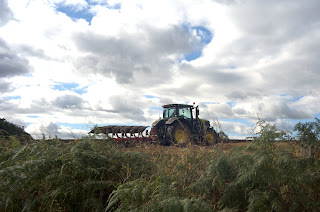Like most people I have a Bucket List of things to do before I shuffle off this mortal coil and join the choir invisible. It's not your average bucket list that involves dangerous feats of daring do, other folk can do that daft stuff. I just keep my bucket list simple with things I have a chance of achieving. Several items on my bucket list are photography related and includes the subject of this weeks blog.
There are a few lenses and camera's on my bucket list and I managed to tick one off recently when I was finally able to purchase a Meyer-Optik Goerlitz Lydith on ebay. I have bid on several over the last three years, but I have either been outbid or the price has gone above my spending limit, that's an important thing everyone should have when shopping on ebay. My patience was rewarded with a decent lens for less than £30.
When it arrived I was like a kid at christmas openng a present and now it was in my hands I had to start using it immediately. First things first, I gave it a good clean. A couple of minutes of care soon had me grining as I could see I had bought a good quality item. The lens I bought was a quirk of advancing technology in the 1950's and 60's. It has a preset aperture function. You pull the aperture ring out, turn the ring to select the aperture you want to use and release the ring with the indicator pointing at the number. Then you ope the aperture wide open to find your composition and focus. Once you have that, turn the aperture ring to your chosen aperture. It will not go past that number until you select another aperture. This is a halfway house between totally manual lenses and those like my Helios 44m-4 that has an auto aperture pin that is pushed in by the camera mechanism as you take your shot. It didn't take me long to figure out how to use it and I fitted the Lydith onto my Pentax SP500, loaded a roll of HP5 into it and went for a walk.
I never tire of the local nature trails and farm roads. It's been particularly nice to be able to get out and about this year despite the 'rona and enjoy my photo walks. On this particular day I was treated to billowy clouds and ever changing light. It was perfect to use a yellow filter for some of my wide shots as I experimented with my Lydith. The preset aperture can be fiddly behind a filter holder, but I soon got used to it. The only thing wrong with using it on my film camera first was having to wait until I developed the film when I got home. However, I always go well armed and had my Nikon D700 and an M42-F mount adapter in my bag. It didn't take long to shoot a roll of film and I swapped the lens onto my D700 and began shooting digital. I admit to doing a lot of chimping whilst I made my way home.
From my digital images I could see the optical quality of a lens that was made in the 1960's was still top notch. Meyer-Optik had a great reputation for quality before Germany was split into two after the war. It's to the credit of the German photographic industry that they not only rebuilt their industry from piles of rubble, but also after having most of their stock and machinery taken in reparations. I can tell someone had put not just their skills into making my Lydith, but a fair amount of love for their craft too.
It wasn't long before I developed my film and marvelled at the sharpness of the images I got right and still marvelled at the creamy softness of those I slightly missed the focus on. I developed my film using Kodak HC-110 dilution B and I am very happy with the resuts. I'm no stranger to Soviet and East German lenses, but this is on it's own level entirely. Centre sharpness is bang on and the fall off is so smooth when shooting close up that your subject almost melts out of focus towards the edges. This is one bucket list lens I will never regret buying and It's going to be living on my Pentax SP500 for a while.
Here are a few images I shot both in film and digital formats using my Lydith. I hope you enjoy them as much as I did taking them. You can also see a few more images on my Flickr album Lydith and maybe they will inspire you to give East German optics a try.
I bought my Ilford HP5+ 400 from Analogue Wonderland
I bought my Kodak HC-110 from Nik and Trick Photo Services
Please pay them a vist as they are great folk to do business with.








































